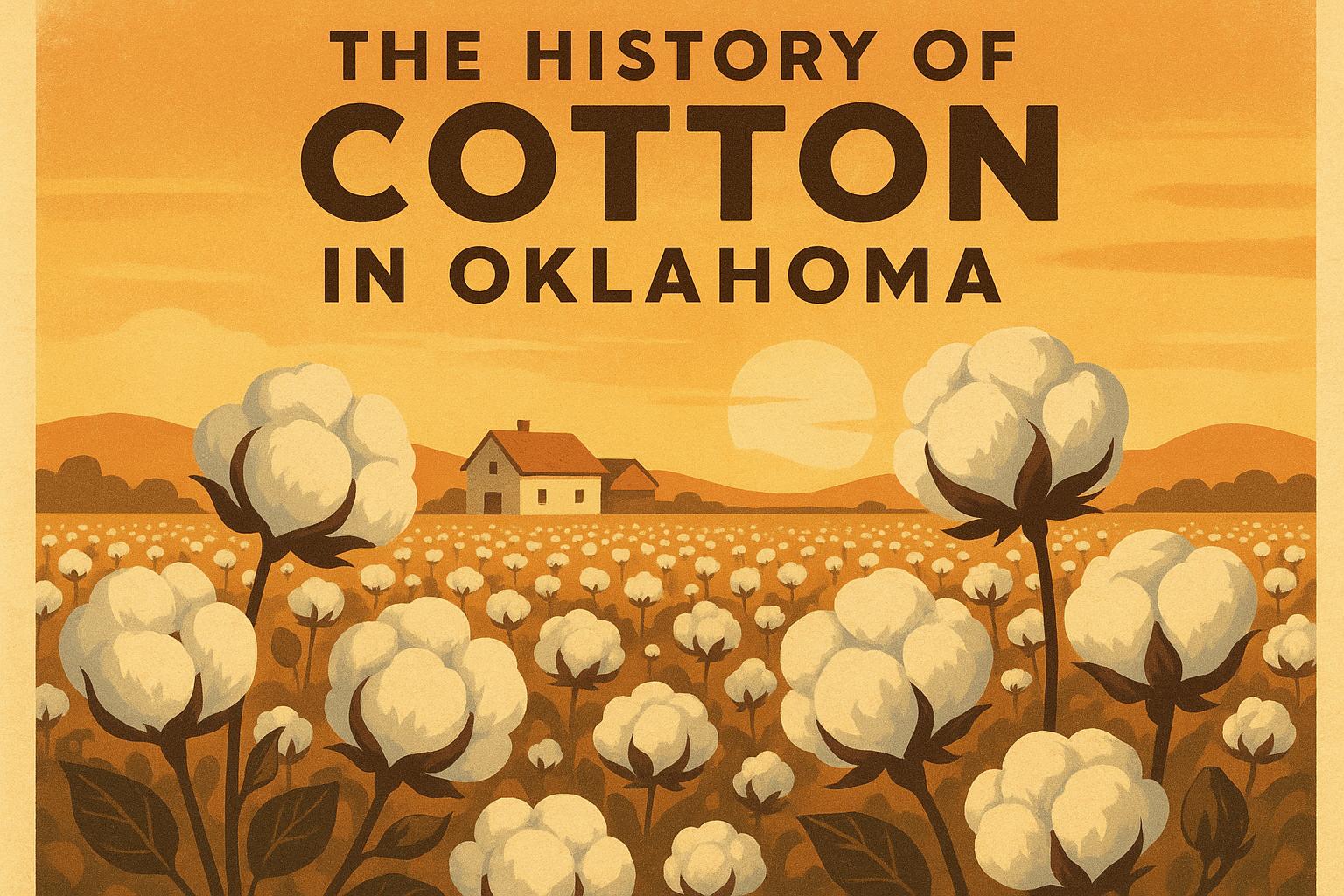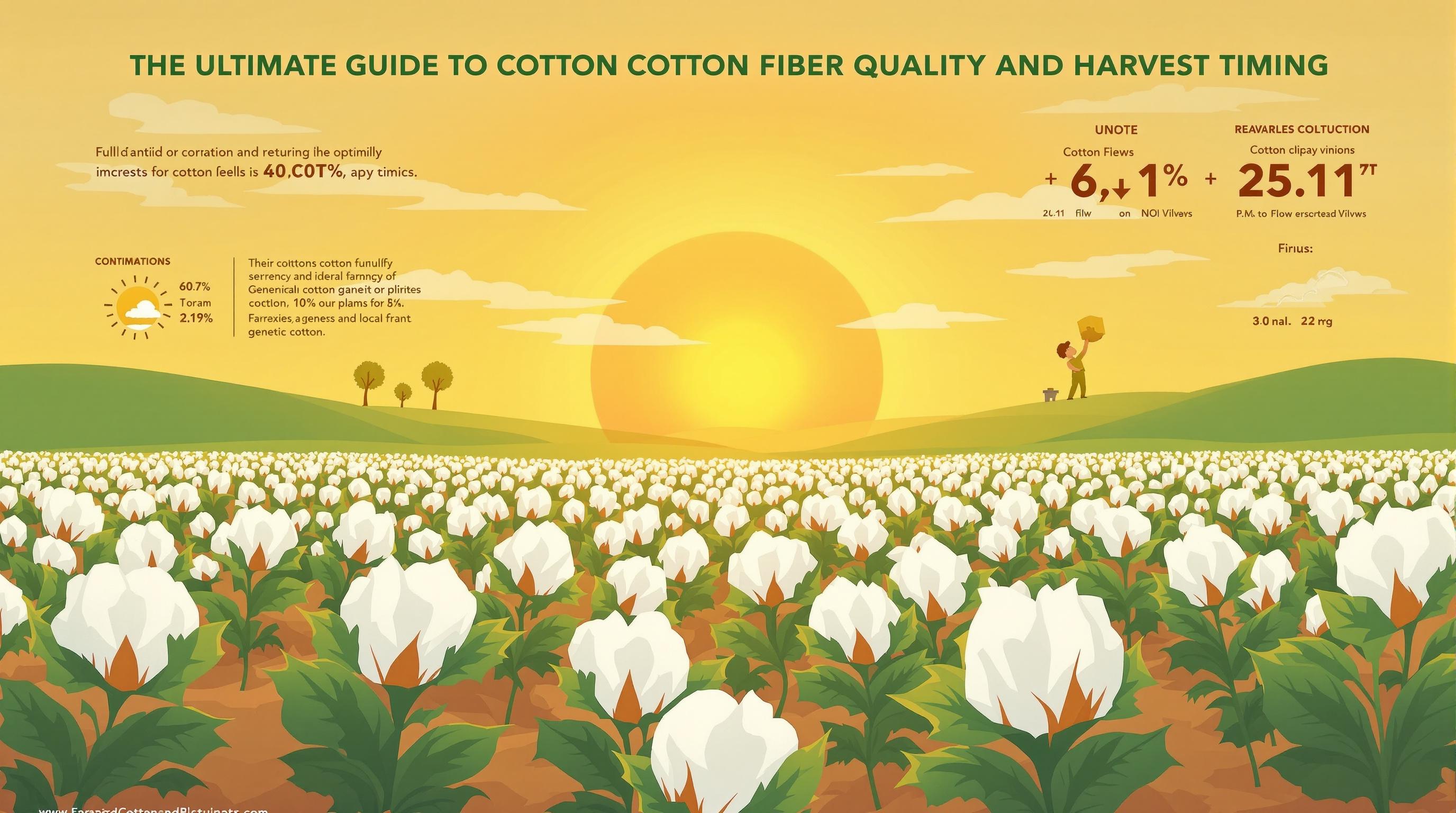Executive summary (TL;DR)
- Cotton farming water conservation in arid regions uses techniques like drip irrigation and cover crops to save 20-40% water while maintaining yields, addressing pain points like drought for seasoned growers.
- Key strategies include soil amendments, mulch, and sensor tech, boosting soil health and reducing evaporation for long-term resilience in low-rainfall areas.
- Future innovations like AI forecasting and biotech varieties promise 15-30% more savings; start with audits and phased adoption to cut costs and enhance profitability.
Related Post: For more on irrigation efficiencies, check out our Efficient Irrigation Strategies for Cotton Farming: Optimizing Water Use and Yield.
Making Every Drop Count in Dryland Cotton
In the Texas High Plains, where the rains just didn't come, wells ran low, and the crop stressed early, reminding me that water is the lifeblood of cotton, especially when Mother Nature skimps. Cotton farming water conservation isn't some fancy theory; it's practical steps to stretch limited supplies, keeping your operation viable in arid zones where every inch counts. This approach turns scarcity into strength, reducing pumping costs and building soil that holds moisture longer, all without sacrificing boll set or fiber quality.
Agronomic data from extension services in dry cotton belts shows that conservation techniques can save 25-35% water while stabilizing yields at 1,200-1,500 lbs/acre in low-rain years. Factors like soil texture, evaporation rates, and crop stage all influence methods, but with tailored strategies, you can address challenges like salinity buildup or uneven distribution. For experienced growers, this means integrating conservation with your rotation, variety choice, and tech stack, drawing on field trials to optimize for your sandy loams or clay pans, ensuring long-term sustainability in water-stressed regions.
Auditing Your Water Use for Targeted Savings
Before implementing changes, know your baseline—cotton farming water conservation in arid areas starts with tracking usage to spot leaks like over-pumping or inefficient systems that waste 20-30% per irrigation audits.
- Meter Installation: Place flow meters on wells/pivots; log gallons per acre weekly—data shows unmetered farms overuse 15-25%, inflating bills $50/acre.
- Evaporation Loss Assessment: Use pans to measure rates; high winds evaporate 0.2-0.3 inches/day—cover reservoirs to cut losses by 30%.
- Crop Water Requirement Calculation: ET models from apps estimate needs; adjust for stage, saving 10-20% vs. calendar scheduling.
Use free USDA tools for logs; annual audits refine. Challenges in variable aquifers are met by groundwater monitoring; small farms benefit from shared meters via co-ops.
Drip Irrigation Systems: Precision Delivery for Arid Fields
Floods waste in drylands—cotton farming water conservation favors drip systems that target roots, saving 30-50% water per trials while boosting boll retention in heat.
- Subsurface Drip Setup: Bury tapes 6-12 inches; delivers 0.5-1 inch/week directly, reducing evaporation 40% in sandy soils.
- Emitter Spacing Optimization: 12-18 inches for cotton rows; variable flow for slopes, cutting runoff 25%.
- Chemigation Integration: Inject fertilizers; improves uptake 15-20%, minimizing leaching in permeable grounds.
Initial $1,000-1,500/acre; ROI in 3-5 years via savings. Challenges in clogging are met by filters; annual flushes maintain.
Cover Crops and Mulch for Moisture Retention
Bare soil loses fast—cotton farming water conservation uses covers and mulch to shade and insulate, holding 1-2 extra inches per season in arid climates.
- Winter Cover Selection: Rye or vetch post-harvest; rye's roots improve infiltration 20-30%, per soil studies, while vetch fixes N for the next crop.
- Residue Mulch Techniques: Leave 30-50% stubble; chop evenly for cover, cutting evaporation by 25% in windy plains.
- Living Mulch Systems: Inter-row legumes during growth; suppress weeds, saving 10-15% herbicide while conserving soil moisture.
Plant fall; terminate spring. Challenges in cold kills are met by hardy mixes; extensions guide selection.
Soil Amendments to Boost Water Holding Capacity
Arid soils drain quickly—cotton farming water conservation is enhanced with amendments like compost or biochar, increasing retention 15-25% per amendment trials.
- Organic Compost Application: 5-10 tons/acre builds humus; improves structure for better pore space, holding 20% more water in sands.
- Biochar Incorporation: 2-5 tons/acre locks moisture/carbon; long-term, boosts cation exchange 10-15%, reducing irrigation frequency.
- Gypsum for Saline Soils: 1-2 tons/acre disperses sodium; enhances infiltration 30%, preventing crusting in alkali areas.
Apply pre-plant; test for fit. Challenges in cost are met by bulk buys; ROI through yield stability.
Sensor Technology for Smart Water Management
Guessing wastes—cotton farming water conservation uses sensors for data-driven irrigation, saving 20-30% per tech studies by applying only when needed.
- Soil Moisture Probes: Tensiometers at 6-18 inches; apps alert for 50% depletion, preventing stress without excess.
- Weather Stations: On-farm units forecast ET; integrate with pivots for auto-adjust, cutting use 15% in variable weather.
- Drone Thermal Imaging: Maps hot spots; identifies leaks or dry zones, optimizing 10-20% in large fields.
Low-cost starters $500; wireless for ease. Challenges in calibration are met by extensions; annual checks ensure accuracy.
Harvest Timing to Minimize Water Loss
Late water cuts quality—cotton farming water conservation times defoliation for efficient dry-down, saving post-bloom irrigation 10-15%.
- Boll Maturity Checks: Sample for 60% open; delay in dry weather to use natural moisture, reducing pumps.
- Defoliant Selection: Ethephon for opening; accelerates 5-7 days, minimizing exposure to late rains.
- Moisture Monitoring: Handheld meters ensure <12% at pick; avoids mold, preserving grades.
Forecast aids timing; challenges in heat are met by shade. Annual logs refine.
Economic Analysis: Savings from Water Conservation
Numbers drive adoption—cotton farming water conservation can save $50-100/acre in pumping, per econ models, with ROI in 2-4 years for systems like drip.
- Cost-Benefit Breakdown: Drip at $1,200/acre saves $80/year water; covers add $30 but return $50 in fertility.
- Yield Stability Metrics: Better retention lifts 100-200 lbs/acre in dry years; $70-140 value at $0.70/lb.
- Incentive Programs: NRCS grants cover 50% for probes/covers; add $20-40/acre.
Use calculators; challenges in upfronts are met by leases. Track via apps.
Overcoming Common Conservation Challenges in Arid Areas
Hurdles exist—cotton farming water conservation faces issues like salinity or initial costs, but solutions make it viable.
- Salinity Buildup: Leach with off-season floods; gypsum aids, cutting accumulation 20-30%.
- Cost Barriers: Grants/EQIP fund 40-60%; start small for proof.
- Weed Pressure: Herbicide-resistant covers suppress; reduce 15% with mulch.
Peer groups share tips; challenges fade with experience.
Regional Water Conservation Recommendations
Tailor to arid sub-regions—cotton farming water conservation varies for maximum impact.
- Texas High Plains: Drip/sensor combos; save 30% in windswept sands.
- Arizona Low Desert: Biochar amendments; hold 25% more in alkaline soils.
- New Mexico Valleys: Harvest ponds; supplement 20% in limited aquifers.
Local data guides; adjust annually.
Case Studies: Water Savings Success in Arid Cotton
Real stories motivate—cotton farming water conservation has revived operations in dry belts.
- West Texas Grower: Drip/covers saved 35% water; yields stable at 1,400 lbs amid drought, net $80/acre.
- Arizona Farm: Sensors/mulch reduced evaporation 28%; boll retention up 15%.
- California Valley: Amendments/probes cut use 22%; qualified for $25/acre credits.
Adapt tactics; scale to your farm.
Future Innovations in Water Conservation for Cotton
Stay ahead—cotton farming water conservation evolves with tech for 20-30% more savings.
- AI Irrigation: Predict needs from weather; cut waste 25%.
- Nano-Sensors: Real-time root zone data; precision up 15%.
- Gene-Edited Varieties: Low-water lines; yields same with 20% less.
Monitor research; adopt for edges.
Water Conservation Technique Comparison Table
Here's a comparison of water conservation techniques in cotton farming based on general industry data:
| Technique | Water Savings (%) | Implementation Cost ($/acre) | ROI Timeline | Key Benefit | Potential Drawback |
|---|---|---|---|---|---|
| Drip Irrigation | 30-50 | 1,000-1,500 | 3-5 years | Targeted delivery | Clogging maintenance |
| Cover Crops | 15-25 | 20-40 | 2-3 years | Moisture retention | Initial establishment |
| Soil Amendments | 15-25 | 50-100 | 2-4 years | Holding capacity boost | Bulk application |
| Sensors | 20-30 | 500-1,000 | 1-2 years | Data-driven scheduling | Calibration needed |
| Mulch | 20-30 | 30-50 | Immediate | Evaporation reduction | Residue management |
This table highlights options; adjust for your soil with local trials.
Measuring Success and Continuous Improvement
Track to refine—cotton farming water conservation requires metrics for ROI.
- KPI Setup: Gallons per bale (aim <500); yield stability in dry years.
- Tools: Apps for logging; compare pre/post.
- Benchmarking: Against peers; identify gaps.
Monthly reviews; pivot strategies. Challenges met by logs.
Actionable Takeaways for Your Water Plan
Implement these for cotton farming water conservation:
- Audit Use: Meter/track; identify leaks.
- Install Drip: Target roots; integrate chemigation.
- Add Covers/Mulch: Retain moisture; select regionally.
- Amend Soil: Biochar/gypsum; test for fit.
- Use Sensors: Schedule precisely; monitor annually.
Cotton farming water conservation stretches resources, ensuring success.
Cotton farming water conservation turns scarcity into strength, positioning your farm for enduring yields.


